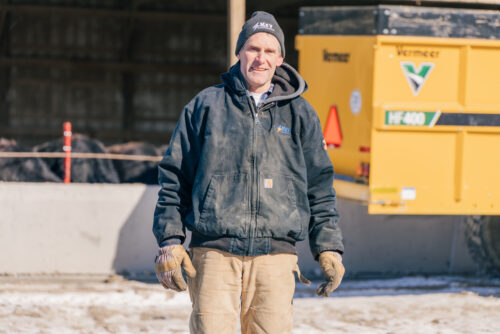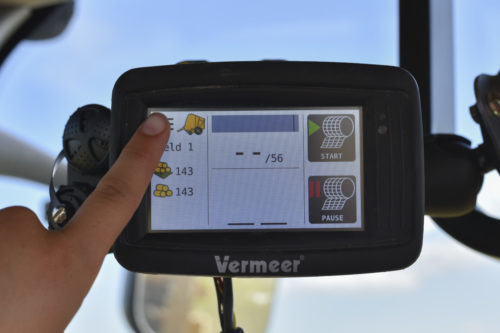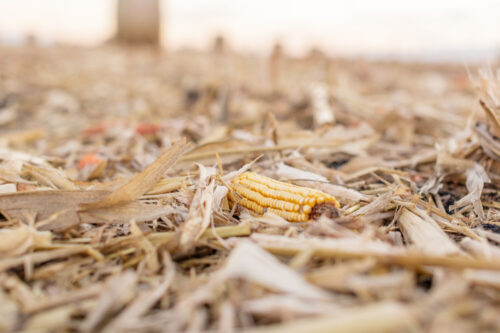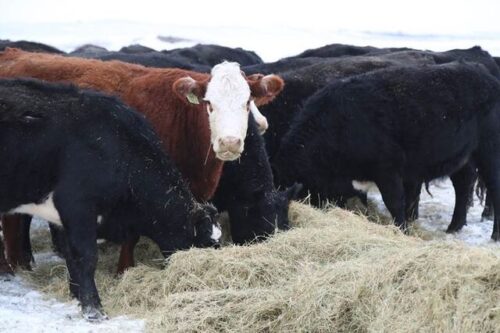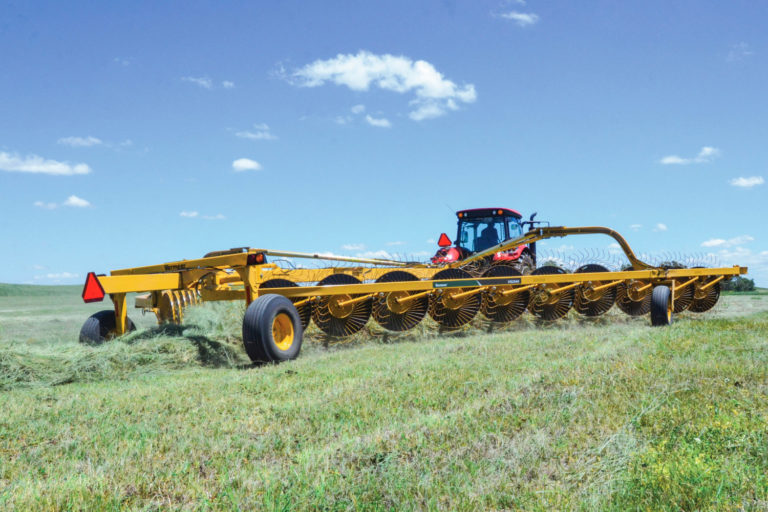
The Right Hay Rake for the Job
June 2018
Though it’s a simple, low-cost implement on most operations, the hay rake can have a big influence on your forage crop, its value and overall quality. It’s important to select and operate the right type of rake for both the crop you produce and the environment in which it’s raised.
Forage producers generally employ one of three main types of hay rakes: wheel, parallel bar or rotary. Which type is the best fit for your operation depends mainly on what you grow, the weight and moisture of that crop and your maintenance inclinations.
“I think hay rakes in general are still the most underappreciated piece of equipment in the whole forage production area,” Vermeer Forage Solutions Product Manager Shawn Wang said. “Rakes are relatively simple compared to other types of machinery, but today, there is more variety out there than a few years ago. So, I think attention is growing.”
So, which rake is best for your operation? The answer starts by looking first at your own specific operation. Wang recommends asking the following key questions:
- How many acres will I cover with the rake? How many times will I cover my fields each year?
- How rough and what sizes are my fields?
- What are my forage crops? At what moisture levels will I cut, rake and bale each cutting?
- What is my budget?
- How comfortable am I handling maintenance myself?
“You have to consider forage quality. A good rake will introduce less dirt, rocks and contamination in general, and will keep hay moisture levels more even,” Wang said. “Cost of maintenance and operation is also very important. A good rake will help with productivity.”
Each type of rake has its pros and cons, and those factors contribute to the answers to the key questions you should ask yourself when making a purchase decision, Wang added.
Wheel rakes
Wheel rakes are the most common on North American forage operations, with popularity remaining strong because of their simplicity and lower costs. They perform well in dry hay and stalk fields, but aren’t the best option for wetter, heavier forage crops. Models like the Vermeer VR1428 high-capacity wheel rake can rake in 28-ft-wide (8.5 m) passes, making for efficient progress in dry hay fields, Wang said.
“In general, initial purchase price and maintenance costs are lower. They can cover a lot of ground quickly, operating at up to 14 miles per hour (22.5 km) in some conditions. And, they’re easy to pull with relatively low horsepower,” he said. “But, wheel rakes are ground-driven, so in order to turn a heavy crop, they have to be set fairly aggressively and contact the ground, which can potentially introduce contamination like rocks and dirt to the hay crop.”
In general, wheel rakes work best for forages at moisture levels of 30 percent or below. When raking high moisture hay, the rake must be set heavier therefore, it can increase contamination to the crop; it can also cause premature wear or damage to the rake itself.
“If you run with high ground pressure or rake too hard, it can result in more frame fatigue,” Wang said. “Teeth are the biggest issue. Running them into the ground can also wear them down more quickly.”
Bar rakes
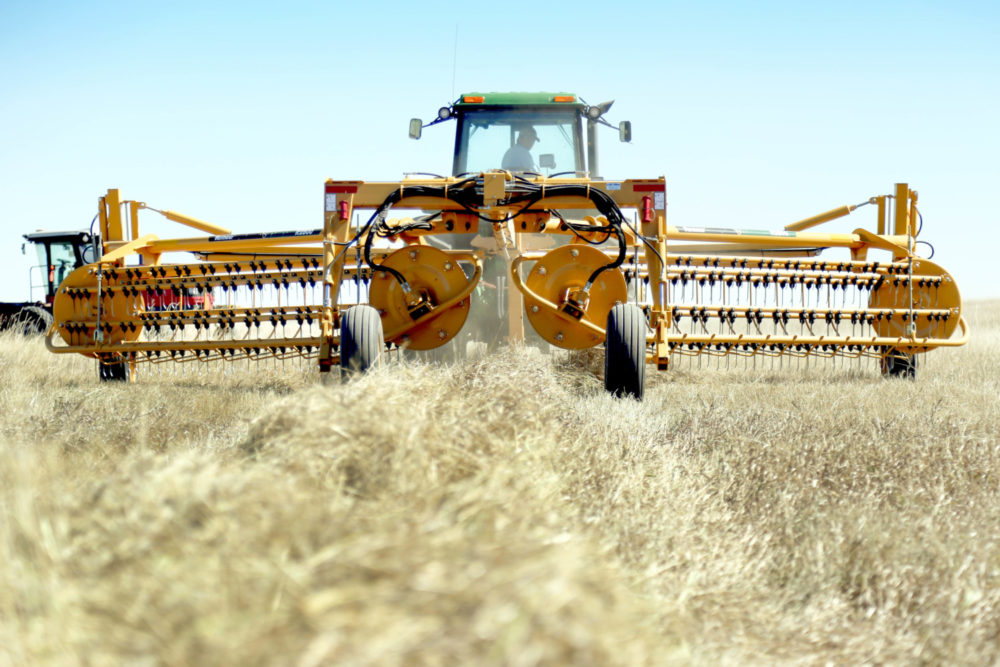
Sometimes referred to as twin rakes, parallel bar rakes or basket rakes, bar rakes often include a hydraulic drive system, eliminating the need for ground contact as a power source. Models like the Vermeer R2800 twin rake are consequently better able to handle wetter, heavier forage crops in addition to performing well in dry hay. Because teeth don’t come into contact with the ground, parallel bar rakes offer an overall durability and ease of maintenance similar to wheel rakes. On top of that, these rake types provide different windrow options.
“The basket angles and windrow tightness are normally adjustable. Double-basket parallel bar rakes yield a boxy windrow that is easy to bale,” Wang said. “If you are raking wet hay, you may consider a bar rake powered by the tractor hydraulics.”
With such ease of maintenance and longevity, parallel bar rakes – which do usually carry higher price tags than wheel rakes – can sometimes last many years depending on maintenance and acres covered over the life of the machine. But, wear is inevitable, and it’s important to inspect bar teeth to check they’re functioning as needed.
“I’ve seen many used bar rakes that are several years old and still in use. The original teeth may still be intact, but they may be heavily worn,” Wang said. “Some may have the curved outer portion completely worn off, so the teeth will be 2 inches (5.1 cm) shorter. It’s important to make sure they’re not worn too much and replace them if needed.”
Rotary rakes
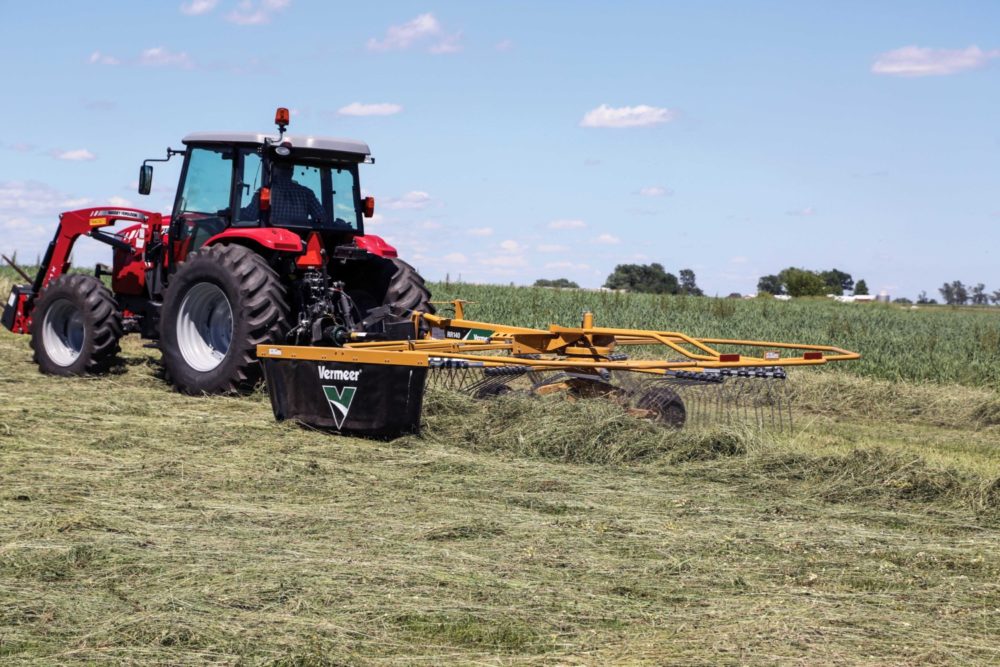
At a price point similar to bar rakes, rotary rakes also provide hydraulic drive systems, handle wet, heavier forage crops well and minimize contamination by keeping teeth off the ground. The Vermeer RR140 rotary rake, for example, features arms with double tines that handle a crop gently, and hydraulic lift and rake adjustments that help minimize ash content, both of which help maintain high forage quality.
Though they can handle a wide variety of forage types and weights with moderate horsepower requirements, rotary rakes aren’t as capable of high field speeds and require more attention to maintenance. With a design that utilizes a center cam mechanism, there’s a natural stress point that can create maintenance issues. Repairs often require a certified technician because of the specialized parts and tools they often require.
“Rotary rakes are good for rolling hills or even pivot tracks, but are not well-suited for cornstalks or in fields with really rough waterways or ditches.”
Find the right rake match
Once you’ve determined which of these three common hay rake types is right for your operation, it’s important to find the right size and model that accounts for the size of your operation, speed at which you operate, your hay quality expectations, maintenance inclinations and overall rake cost. But, it’s just as important to make sure whichever rake type you choose, you take time to set it up right before heading to the field to achieve optimum efficiency.
“You want to be able to rake consistently. Setting up a rake so wheels are overstressed, pressure is uneven or tooth life is shortened can all affect raking performance,” Wang said. “With wheel rakes, set them up as lightly as possible. With bar and rotary rakes, don’t set them too low or aggressively because that can cause hay contamination and reduce the life of rake teeth.”
Are you looking to add a new hay rake to your operation? Find out which Vermeer model is right for you at Vermeer.com/rakes.


